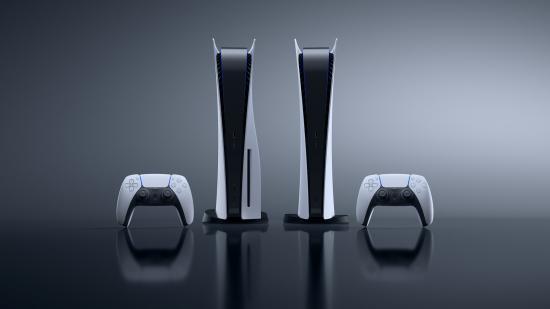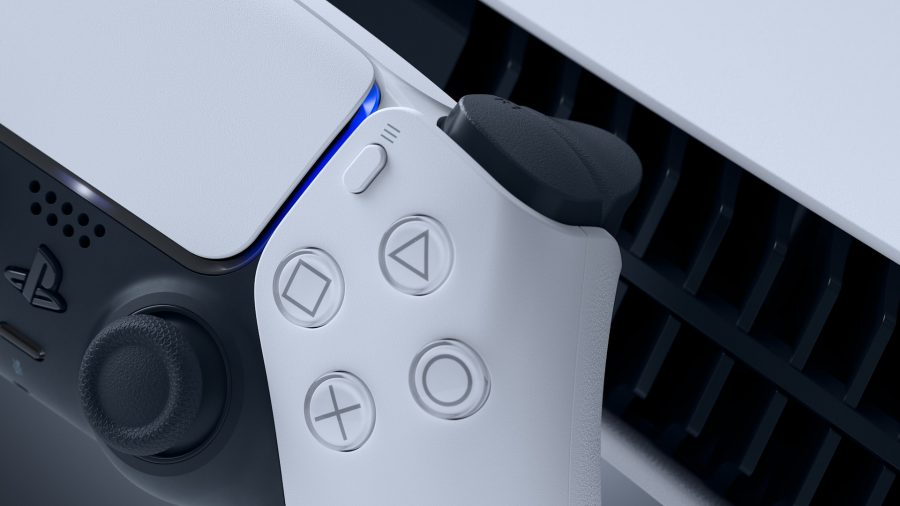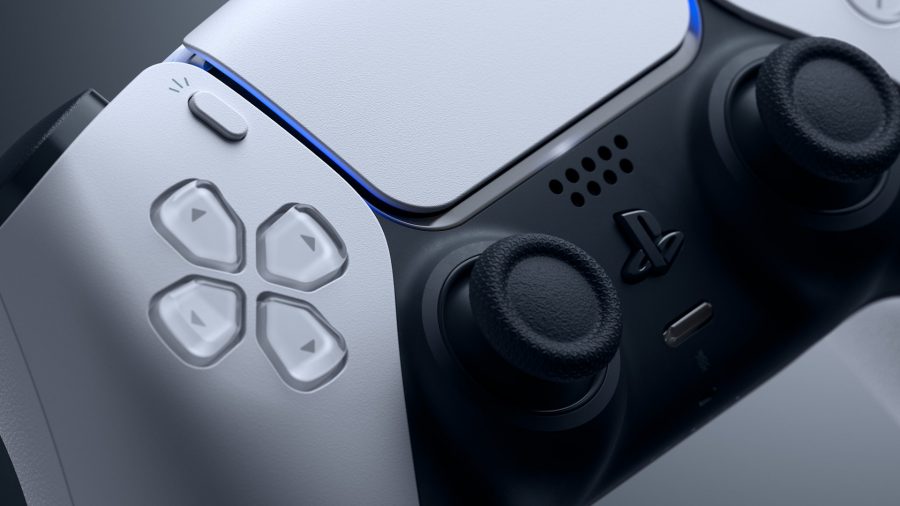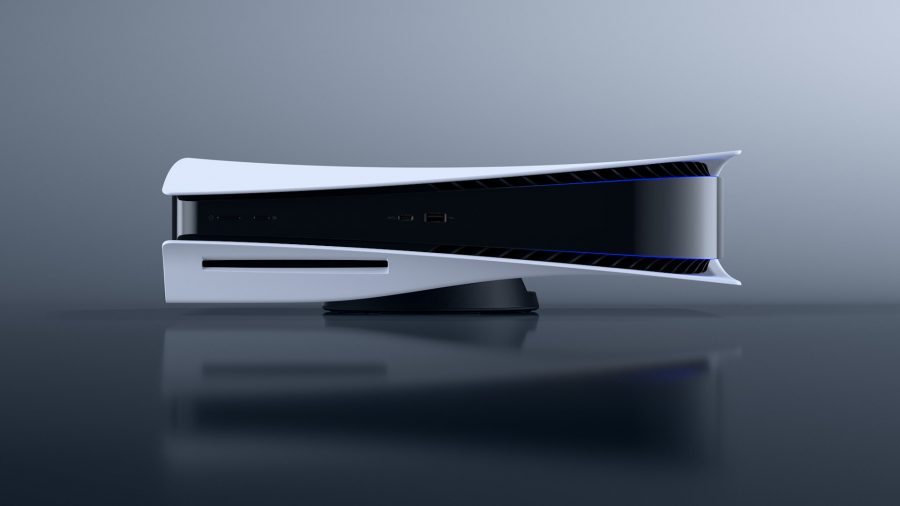It’s been a long time since a next-gen console controller set the world on fire, but we might be due for a big spark once the PlayStation 5 releases. After spending the last two weeks with a PS5 review unit and DualSense controller, I’m confident in saying it’s the biggest advancement in controller technology since the debut of the analog stick.
While it’s not yet clear how much of an impact the new PS5 controller is going to have, the general feedback so far suggests that the features found in the DualSense will set new industry standards.
The DualSense has some unique features, but the biggest draw for many will be the big, flashy PS5 specs that comfortably place the console into a next-gen category in terms of power and performance. We’re finally entering an age where 4K resolutions are becoming the norm for televisions and monitors which represents a broader shift towards higher-fidelity experiences. Higher resolution meets larger textures, larger file sizes, and more. Combined with cutting-edge display technology to enable 60 FPS and even up to 120 FPS, as well as ray tracing, the new era of console gaming is finally here.
While I’m confident that each feature is bound to have a profound effect on the casual competitive gaming scene, the controller still stands out as the next-gen system’s most impressive bit of kit so far.
This is because with the new DualSense brand, Sony is focusing heavily on the way the controller feels in your hands. The general shape is still largely the same as the DualShock, but there are a few subtle changes.

Specifically, the hand grips aren’t smooth and rounded anymore. Instead, they’re slightly angled at the bottom, and the back of the controller has a textured matte finish that includes microscopic replicas of the iconic face button symbols. It’s a neat little easter egg but in practice you don’t notice anything other than the increased ergonomics and grip.
Adaptive triggers
One of the big things about the new controller is the fact that it will actually change and adapt to whatever game you’re playing. It sounds crazy, but it actually works.
Depending on what you’re doing at any given time, the R2 and L2 trigger buttons feel and react differently. For example, in Astro’s Playroom, there is a section where you control a spring-loaded robot and need to hold down the R2 button to coil up, and charge the spring. Once you reach a certain point pulling R2 down, the tension increases and it gets harder to press.
Another example, again from Astro’s Playroom, is the tension you feel from the triggers when you’re using a bow and arrow. When you reach full tension, you can feel a ‘click’ in the trigger. I can imagine this being used for all sorts of things in first-person shooters in the future, giving players more things to think about than just their gun’s recoil pattern.
That being said, I wasn’t able to try out a shooter optimised for PS5 using the DualSense controller prior to the hardware embargo, but the opportunities for increased accuracy and immersion are fantastic. Players that master the nuances of this new controller could certainly have an edge based on feel and reactivity alone – should it be allowed in competitive play.
Even though it wasn’t optimized for PS5 yet, I hopped online to play a few matches of Call of Duty: Warzone as a backwards compatible PS4 title to take the DualSense for a test drive. I’ll start off by saying I immediately played better than I had been recently, but who knows if the DualSense should really take credit for that. The curve of the R2 trigger feels better against my finger than the DualShock’s and the grips are much more comfortable. The textured material on the thumbsticks allowed me to be more accurate over time too,which was an added bonus.
Without getting to test the triggers and haptics in an actual PS5-optimized game it’s hard to really say definitively, but based on this brief sample, it seems like DualSense is going to be highly regarded as a step-up for online gaming on PS5 versus PS4.
Haptic feedback
Game controllers have had vibration functionality for decades and as such Sony has devoted more of its marketing to the adaptive triggers so far. However, after using the controller across a handful of PS5 games like Spider-Man Miles Morales, Astro’s Playroom, Bugsnax, The Pathless, and Devil May Cry 5, I’m more impressed by the haptics. In Astro’s Playroom, I could actually feel the difference between the various surfaces the character walked on based on the haptics in the DualSense.
For example, when Astro walked over glass, the vibrations felt more hollow and pointed, whereas when he walked over wood, the controller gave off a much richer feeling. It’s hard to describe, but when you experience it you’ll know exactly what I’m talking about.
This kind of thing seems gimmicky at first, but I can imagine it being a big deal in the future if developers adapt it for competitive games. If used in a first-person shooter, for example, it could determine what weapons players pick based on how the controller feels in their hands when it fires. Adaptive triggers could alter the way guns fire as well, forcing you to retrain your muscle memory.
Granted, all of these features can be turned down or off completely in accessibility settings, but they could actually represent a big shift for online multiplayer games.
Built in mic and speakers
There will be no more excuses about communication for you and your squaddies when playing online games with random players on the PS5, since the DualSense controller comes integrated with a mic.
Whether or not someone has bothered to plug in earbuds or (better yet) an actual headset is another question though. Hopefully if people are playing with TV speakers or surround sound and don’t have a headset plugged in with the mic unmuted it won’t interfere too much, but we haven’t had the chance to see what open lobbies in games like Fortnite on PS5 sound like in practice.
At the very least this should improve communication as a whole and decrease the likelihood of having someone on your team in a game without the ability to communicate.
4K Resolution and higher frame rates
When it comes to competitive gaming, performance is absolutely the most important factor. That’s why for a lot of pros on PC, you’ll see them turn down settings to make sure they get the highest frame rate possible. Faster frame rates means smoother action and quicker reaction times and those things combined together translate to more wins.
However, for some games, a case could be made for better resolution giving an advantage as well. If there are more pixels on-screen that makes it easier to see things at a distance and spot enemies sniping or behind cover that you might have missed at a lower resolution.
Thankfully the PS5 has adaptive scaling and even if you pick a higher frame rate in a game via its performance setting, like 60fps or 120fps if available, it still upscales things to appear as close to native 4K as possible.
Ray tracing
However, resolution scaling does lose out on one really amazing benefit that next-gen consoles have on their high-fidelity settings: ray tracing. When it comes to playing and enjoying a game with the nicest visuals possible, ray tracing makes a huge difference.
In short, ray tracing is a rendering technique that traces the pixels of light across 3D space onto other surfaces. In other words, it allows for much more realistic lighting, shadows, and reflections.
Ray tracing allows for much more realistic reflections because of how it calculates the light rays. This is great for visual quality because it means when you’re playing Spider-Man in 4K on PS5 you can see the city reflected on skyscrapers and look at all the lights bouncing off of windows and the sides of buses at night on the street.
Competitively it could have an impact as well. Imagine playing a game like Rainbow Six Siege and not knowing where that last enemy is hiding. Maybe the 3D audio from the PS5 alerts you that they’re behind you but you’re not sure which direction – then you notice their reflection on the broken mirror in front of you and are able to spin around and take them out to win a match.
That’s just an example, but ray tracing can absolutely lead to advantages in a competitive sense, even without developers trying to utilize it for that specific purpose.
The PlayStation 3 and Xbox 360 were witnesses to the debut of HD console gaming. The PlayStation 4 and Xbox One ushered in a new age of subscription services and digital content. Now with the PlayStation 5 and Xbox Series X we’re on the cusp of the highest-fidelity content gamers have ever had easy access to consoles that rival modern gaming PC rigs.
Excellent frame rates, crisp resolutions, and tuned-up performance should mean better, faster, and more intense competitive gaming than ever before.



